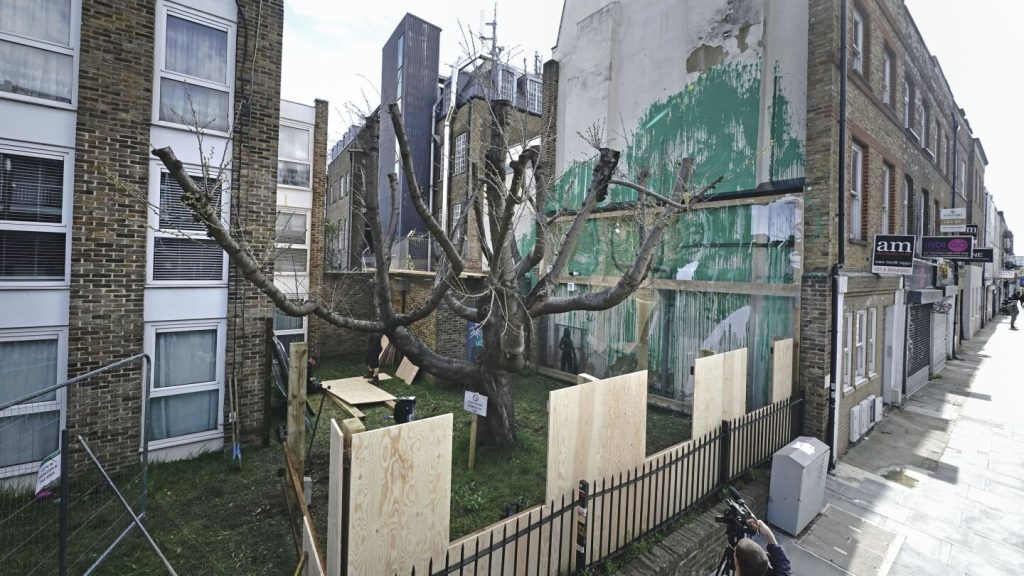The elusive street artist Banksy has once again caught the attention of the public with an environmentally themed mural in London. The mural, which featured a small figure holding a pressure hose beside a real cherry tree, quickly became a popular attraction for Banksy fans from around the world. However, just two days after the mural appeared, it was vandalized with white paint. In response to this act of vandalism, the building’s owner encased the mural in transparent plastic and erected fencing around the site, with a sign indicating that the area was under video surveillance.
Islington Council, the local authority, decided to fence off the site in order to protect the artwork and residents from the disruptive impact of visitors. The council stated that they had received concerns from residents about the large numbers of people visiting the artwork, which was located right outside their homes. The fencing included clear plastic panels to allow for clear views of the artwork while still providing protection. This move was aimed at balancing the desire for people to enjoy the art with the need to address the concerns of the local community.
Banksy, known for his satirical and politically charged art, had previously faced issues with the theft or removal of his outdoor murals. In December, a mural depicting military drones on a stop sign in south London was taken down by a man with bolt cutters, leading to arrests for theft and criminal damage. The latest mural, however, poses a challenge for potential removal as it is intricately connected to the real cherry tree beside it. Islington Council expressed its commitment to monitoring the site and working with the building owner to find solutions that would allow people to continue enjoying the artwork.
Banksy’s identity remains a mystery, adding to the intrigue surrounding his work. The artist initially gained recognition for his graffiti in Bristol, England, and has since become one of the most famous artists in the world. His pieces have sold for millions of dollars at auctions, and his outdoor murals often attract widespread attention. While some of his works have been stolen or removed shortly after being created, the unique connection between the latest mural and the real tree presents a new challenge for those seeking to tamper with it. Islington Council’s decision to protect the artwork reflects the importance of preserving public art for the enjoyment of both residents and visitors.
The encasement of Banksy’s mural in plastic and the fencing around the site indicate the ongoing struggle to balance public access to art with the need for protection and preservation. The decision to monitor the site and explore future solutions highlights the complexities involved in managing public art installations, especially those by elusive and renowned artists like Banksy. As the debate continues over how to safeguard and appreciate public art, the fate of Banksy’s latest mural remains uncertain. Despite the challenges posed by vandalism and controversy, Banksy’s impact on the art world and society at large continues to endure.


